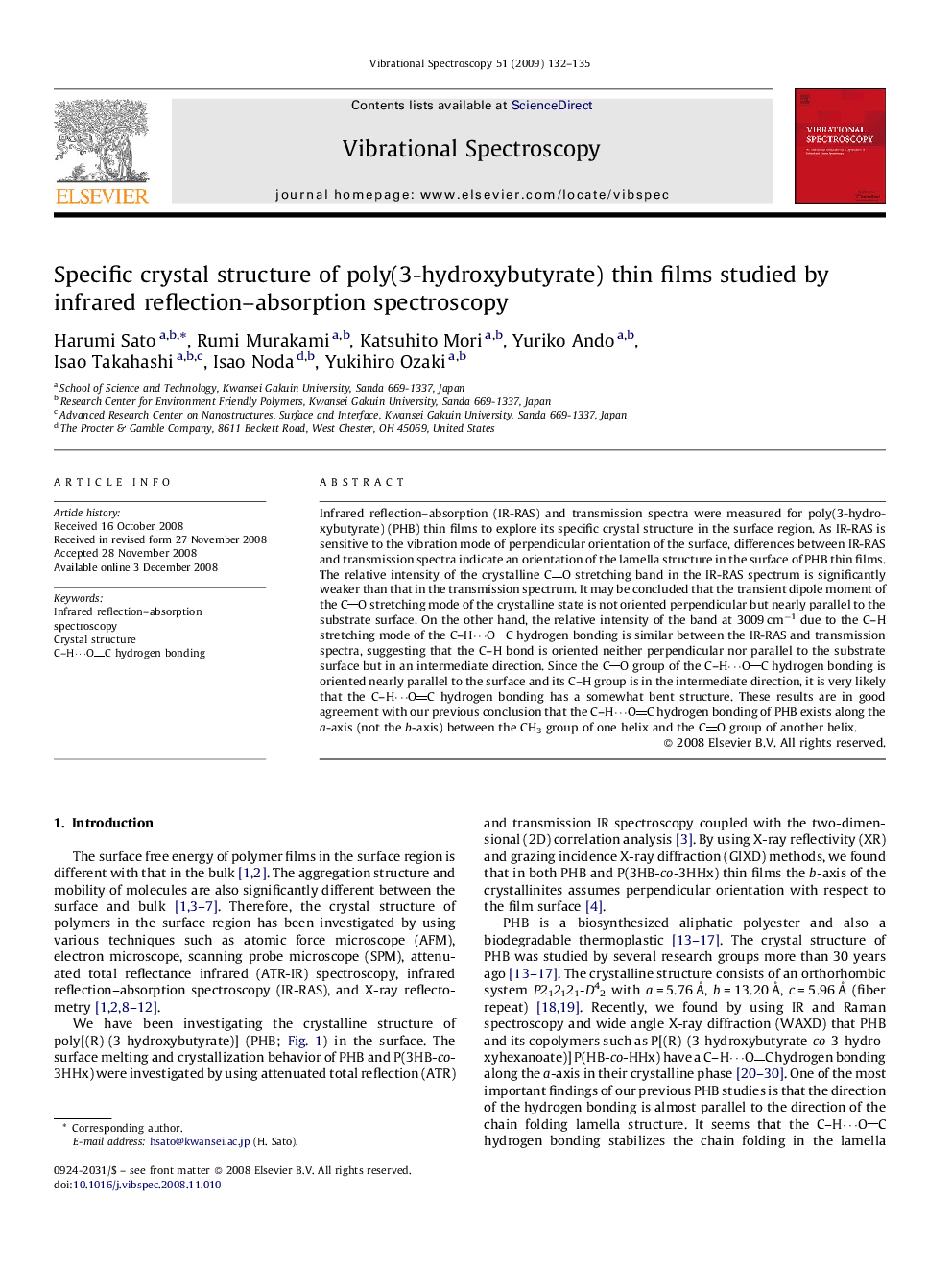| Article ID | Journal | Published Year | Pages | File Type |
|---|---|---|---|---|
| 1250029 | Vibrational Spectroscopy | 2009 | 4 Pages |
Infrared reflection–absorption (IR-RAS) and transmission spectra were measured for poly(3-hydroxybutyrate) (PHB) thin films to explore its specific crystal structure in the surface region. As IR-RAS is sensitive to the vibration mode of perpendicular orientation of the surface, differences between IR-RAS and transmission spectra indicate an orientation of the lamella structure in the surface of PHB thin films. The relative intensity of the crystalline CO stretching band in the IR-RAS spectrum is significantly weaker than that in the transmission spectrum. It may be concluded that the transient dipole moment of the CO stretching mode of the crystalline state is not oriented perpendicular but nearly parallel to the substrate surface. On the other hand, the relative intensity of the band at 3009 cm−1 due to the C–H stretching mode of the C–H⋯OC hydrogen bonding is similar between the IR-RAS and transmission spectra, suggesting that the C–H bond is oriented neither perpendicular nor parallel to the substrate surface but in an intermediate direction. Since the CO group of the C–H⋯OC hydrogen bonding is oriented nearly parallel to the surface and its C–H group is in the intermediate direction, it is very likely that the C–H⋯OC hydrogen bonding has a somewhat bent structure. These results are in good agreement with our previous conclusion that the C–H⋯OC hydrogen bonding of PHB exists along the a-axis (not the b-axis) between the CH3 group of one helix and the CO group of another helix.
